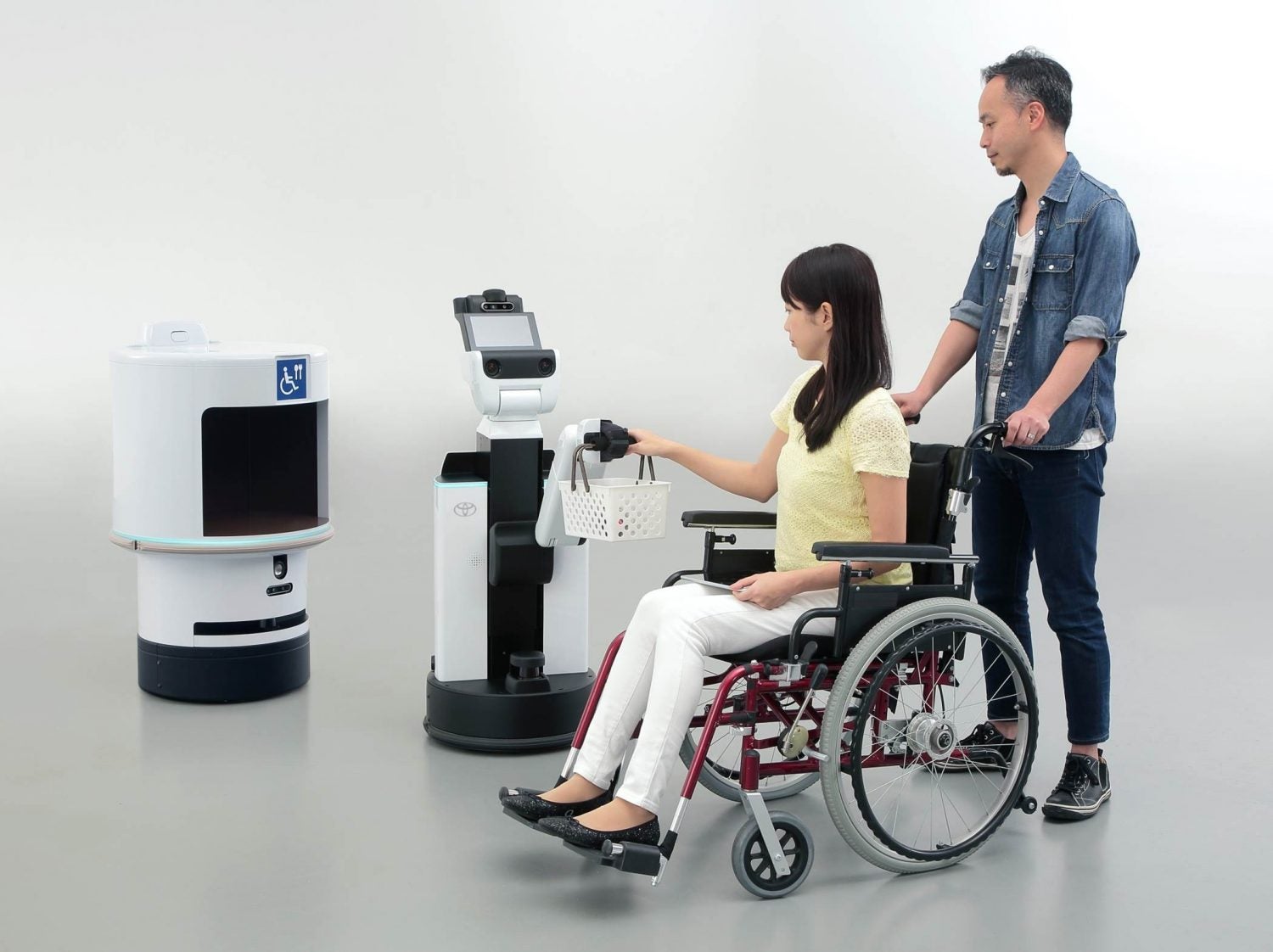Meet the army of robots that will help run the Tokyo Games
Automaker Toyota has developed suite of machines for delayed competition, writes Graeme Massie

Your support helps us to tell the story
From reproductive rights to climate change to Big Tech, The Independent is on the ground when the story is developing. Whether it's investigating the financials of Elon Musk's pro-Trump PAC or producing our latest documentary, 'The A Word', which shines a light on the American women fighting for reproductive rights, we know how important it is to parse out the facts from the messaging.
At such a critical moment in US history, we need reporters on the ground. Your donation allows us to keep sending journalists to speak to both sides of the story.
The Independent is trusted by Americans across the entire political spectrum. And unlike many other quality news outlets, we choose not to lock Americans out of our reporting and analysis with paywalls. We believe quality journalism should be available to everyone, paid for by those who can afford it.
Your support makes all the difference.The Olympic Games may be taking place a year late because of the pandemic, but it will still be a chance for host nation Japan to show off its world-class robotics technology.
And despite spectators being kept away from the events by Covid restrictions, there will still be a string of robotic participants to help run the Tokyo Games.
Japanese automaker Toyota has developed a suite of robots that will be deployed at the Games, but which are designed to show off their wider everyday applications.
“The Tokyo 2020 Games are a unique opportunity for us to display Japanese robot technology,” said Hirohisa Hirukawa, who is the leader of the Tokyo 2020 Robot Project.
“This project will not simply be about exhibiting robots, but showcasing their practical real-life deployment helping people.
“So, there will not only be sports at the Tokyo 2020 Games, but some cool robots at work to look forward to as well.”

Two robots that can interact with humans will act as the official mascots of the games, and act as ‘meeters and greeters’ for athletes and anyone else cleared to attend.
Puppet-sized Miraitowa, which is blue, and Someity, the pink one, are large-eyed robots that will greet the athletes at venues.
They are remote-controlled by a human operator but have on-board cameras that recognises faces and facial expressions and interact with handshakes, head nods and blinking eyes.

Toyota has been developing life-size humanoid robot, T-HR3, since 2017, and it mirrors the movements of their human “handlers” who control it.
The company says that T-HR3, which is controlled by VR goggles and an exoskeleton, will be able to high-five athletes and even hold a conversation.
“With a view to the future, we believe that there will be a high demand for robots that can accomplish delicate tasks in safe interactions with humans,” said Tomohisa Moridaira, who leads the research and development group.
“These robots have been designed with redundant degrees of freedom, meaning that most of its joints can continue to operate even if a few components stop working.”

Perhaps most importantly at this particular Olympics is T-TR1, a telepresence robot that will allow people to virtually attend events and interact with the athletes.
It is a tall, vertical screen that shows a live image of the remote viewer and has a top-mounted camera that gives people the sense of actually being there.
Anyone chosen to take part will also be able to move the robot around a venue using remote control, with it displaying a life-size image of them on it.

One robot that may go slightly underused during the Games is the Delivery Support Robot, which was designed to deliver food and drinks to spectators in 500 wheelchair-accessible seating.
Its partner, the app-commanded Human Support Robot, was also designed to guide guests requiring mobility assistance to their seats.
“We believe that the robots will help spectators in wheelchairs to enjoy watching the events without any restrictions, to soak up the atmosphere inside the stadiums and to feel the excitement of sport,” said Nobuhiko Koga, chief officer of the Frontier Research Centre at Toyota.
Although it will now not be used at the Olympic Games, it could still be used at the Tokyo Paralympics, which start on 24 August.

One group of bots not impacted by the restrictions will be the Field Event Support robots, which will follow operations staff and autonomously navigate to collect javelins and shot puts during track and field events.
Officials say the aim is to reduce the time taken to collect the items and speed up competition.
The robots, which look like miniature cars, were developed by Toyota with the help of the International Association of Athletics Federations.

Away from the actual competition, Toyota will also be using its e-Palette autonomous vehicle to transport athletes and coaches in a circular loop from the Olympic villages to the main stadia.
The vehicle can carry up to 20 passengers, or four wheelchairs and seven standing passengers, and will have a human operator in case of any emergency.
Each vehicle is 5.25 meters long and can run for more than 90 miles before it needs recharging.
If any fault with the vehicle takes place it returns itself to the depot and a replacement is sent out.
A management system sends out vehicles to the locations in a pre-planned frequency, but automatically adjusts the schedule when passenger number build up.
Toyota says that after the games it plans on deploying them as mobile delivery lockers or mobile shops for homebound customers.
Olympic staff will also use a “power assist suit” from Panasonic to unload and move heavy objects, with the exoskeletal suit supporting the back and hip rea and making items 20 per cent easier to lift.
Join our commenting forum
Join thought-provoking conversations, follow other Independent readers and see their replies
Comments